

Below is a comparison between a laser scan today (12/26/2016,) and one done on 9/28/2016


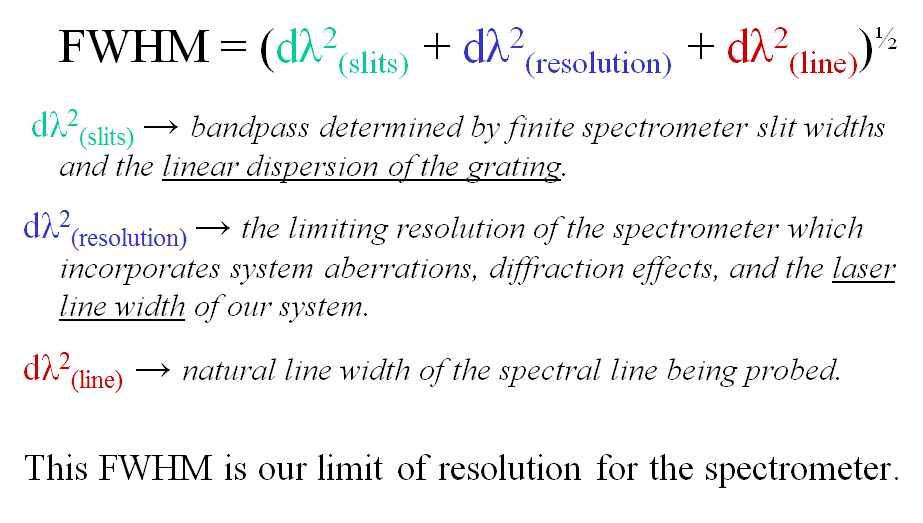

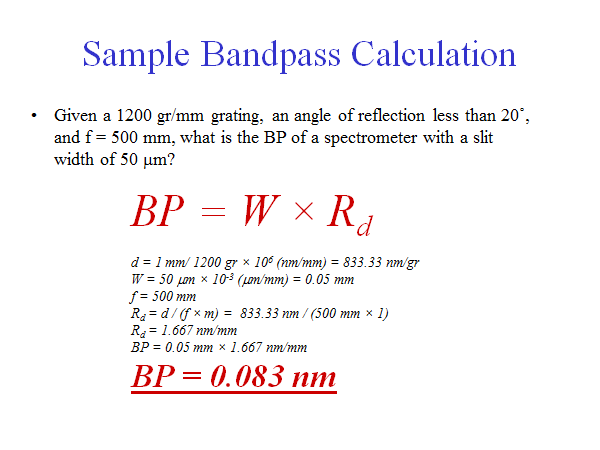
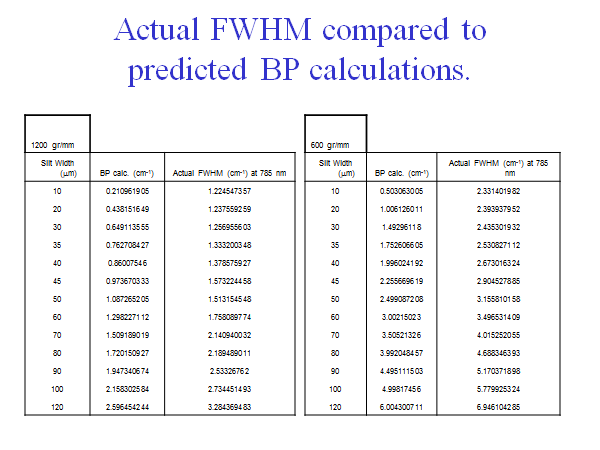
DAV5 V3 spectrometer; DVD diffraction grating-2770 gr/mm { 1 x 0.19 x 2770 = 5263}{531.94/5263 =0.10}
Resolution profile (present) = 0.10nm With a slit width of; 120um
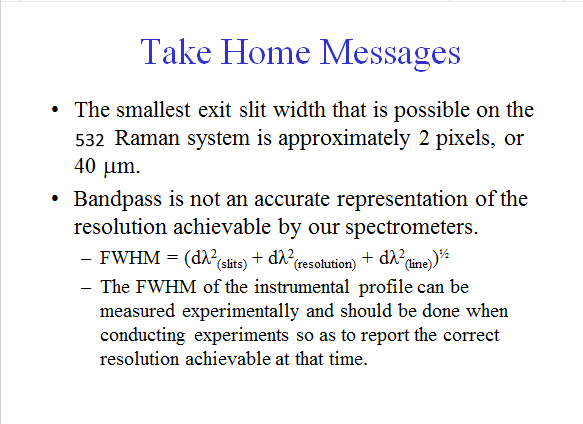
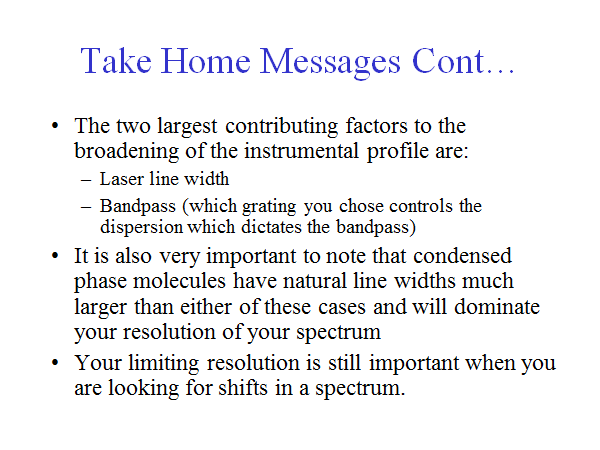
What laser wavelengths are used for Raman spectroscopy?
Laser wavelengths ranging from ultra-violet through visible to near infra-red can be used for Raman spectroscopy. Typical examples include (but are not limited to):
- Ultra-violet: 244 nm, 257 nm, 325 nm, 364 nm
- Visible: 457 nm, 473 nm, 488 nm, 514 nm, 532 nm, 633 nm, 660 nm
- Near infra-red: 785 nm, 830 nm, 980 nm, 1064 nm
The choice of laser wavelength has an important impact on experimental capabilities:
- Sensitivity. Raman scattering intensity is proportional to λ-4 where λ is the laser wavelength. Thus an infra-red laser results in a decrease in scattering intensity by a factor of 15 or more, when compared with blue/green visible lasers.
- Spatial resolution. The diffraction limited laser spot diameter can be calculated according to the equation, diameter = 1.22 λ / NA (where λ is the wavelength of the laser, and NA is the numerical aperture of the microscope objective being used). For example, with a 532 nm laser, and a 0.90/100x objective, the theoretical spot diameter will be 0.72 µm – with the same objective, a 785 nm laser would yield a theoretical spot diameter of 1.1 µm. Thus, achievable spatial resolution is partially dependent on choice of laser.
- Optimisation of resulting based on sample behaviour. For example:
- Blue or green lasers can be good for inorganic materials and resonance Raman experiments (e.g., for carbon nanotubes and other carbon materials) and surface enhanced Raman scattering (SERS).
- Red or near infra-red (660-830 nm) are good for fluorescence suppression.
- Ultra-violet lasers for resonance Raman on bio-molecules (such as proteins, DNA, and RNA), and fluorescence suppression.
 David H Haffner Sr
David H Haffner Sr
Discussions
Become a Hackaday.io Member
Create an account to leave a comment. Already have an account? Log In.